Мain content and topics of the curriculum (A3.2)
Within activity A3.2, the main content, and topics of the curriculum on AAI have been published.
Below is the link
Within activity A3.2, the main content, and topics of the curriculum on AAI have been published.
Below is the link
On March 27-28, 2023 Transnational Meeting A3.1 was held in Nis (Serbia). The Meeting was conducted on the basis of University of Nis https://www.ni.ac.rs/en/.
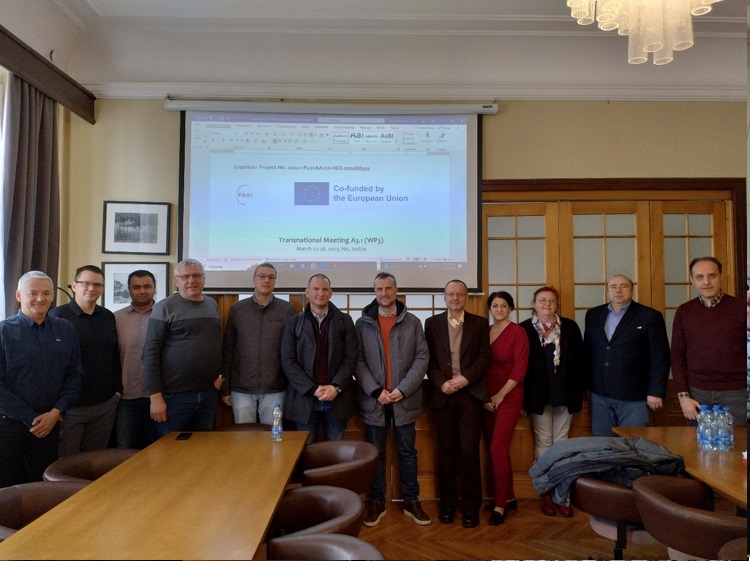
A3.1 Meeting served to coordinate and cooperate efforts with the purpose of developing an AI competency framework for university, and mid-career learners to support the acquisition of technical, business, and human skills while integrating an ethical perspective.
All partners paricipated in this event. The following topics was investigated:
State-of-the-art analysis of the requirements in the field of AAI
The meeting commenced with an in-depth analysis of the current requirements in the field of Applied Artificial Intelligence (AAI). Both Vasyl Martsenyuk and Georgi Dimitrov provided valuable insights into the evolving landscape of AAI.
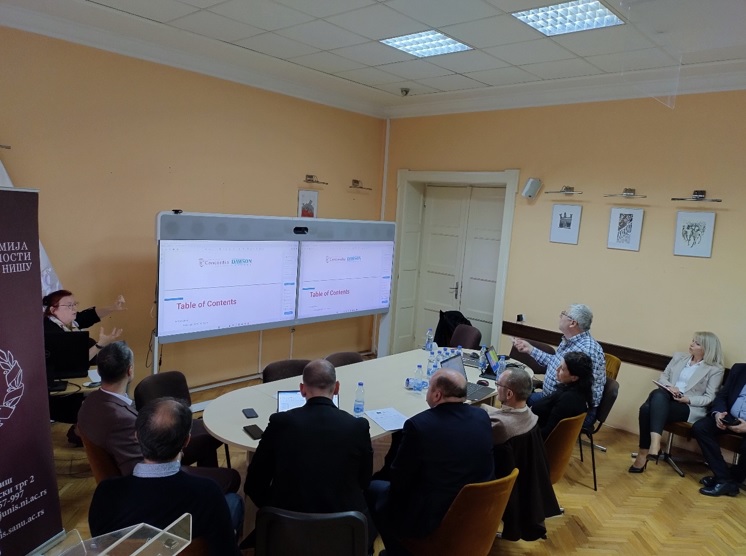
Current State of WP3. Distribution of the Duties and Tasks
Dejan Rancic presented the current status of Work Package 3 (WP3) and outlined the allocated duties and tasks among the partners. The discussion facilitated a clear understanding of the project’s progression.
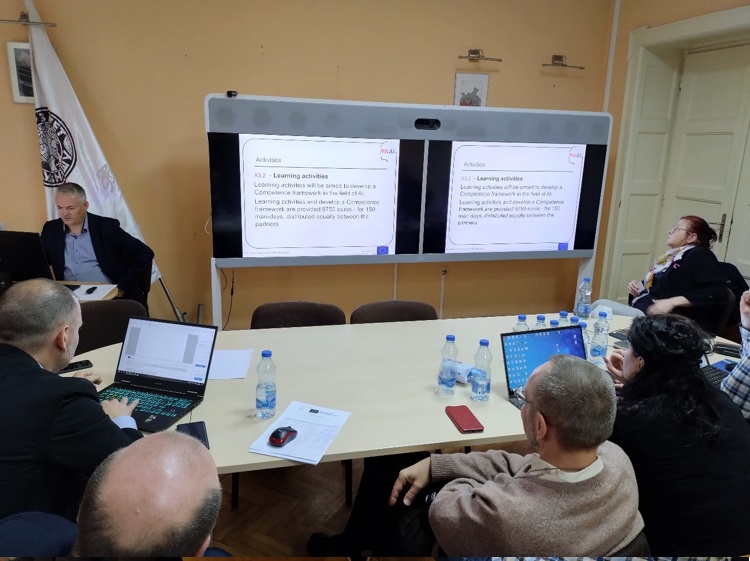
The Artificial Intelligence Competency Framework
Georgi Dimitrov led an informative session on the development of the Artificial Intelligence Competency Framework. His presentation laid the foundation for further discussions on shaping AI education.
The Artificial Intelligence Learning Requirements
Igor Jovancevic shared insights into the learning requirements for mastering Artificial Intelligence. Her presentation emphasized the essential elements needed for effective AAI education.
The Main Content and Topics of the Curriculum
Iveta Dirgova Luptakova outlined the core content and topics that will constitute the curriculum. This session provided a structured approach towards designing the educational modules.
Ethical Perspective of AAI
Eugenia Kovatcheva presented a crucial perspective on the ethical considerations surrounding AAI. Her insights sparked meaningful discussions on integrating ethical principles into the curriculum.
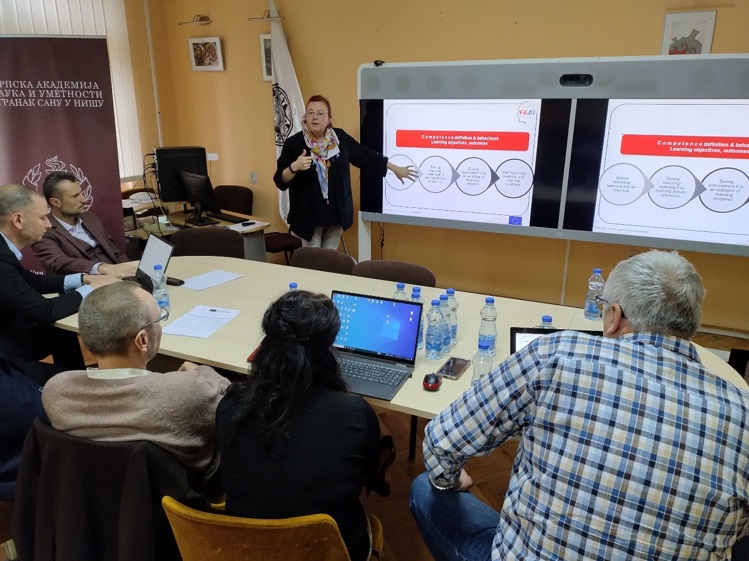
Current State of the Survey Analysis for WP2
Institutional coordinators from all partner universities provided updates on the progress of the survey analysis for Work Package 2 (WP2). This collaborative effort ensured a comprehensive understanding of the research findings.
Managerial Activities of the Project (AdminProject)
Vasyl Martsenyuk discussed the administrative aspects of the project, highlighting key managerial activities and emphasizing the importance of efficient project management.
Dissemination of the Project Results (Events, Publications)
Continuing from the previous session, Vasyl Martsenyuk elaborated on strategies for disseminating project results through various channels, including events and publications.
Current State of Smart AAI Job Hub
Marcin Bernaś provided an update on the progress of the Smart AAI Job Hub, showcasing advancements in creating a platform to connect AAI professionals with job opportunities.
Preparing Teacher Training in Montenegro
Igor Jovancevic discussed the plans and preparations for teacher training in Montenegro, emphasizing the importance of effectively equipping educators to deliver AAI education.
Conclusions: For the reasons given, the A3.1 transnational meeting proved to be a pivotal event in the development of the Erasmus+ project “FAAI.” The collaborative efforts of the partner institutions laid a strong foundation for the project’s success in fostering AI competency across various educational levels.
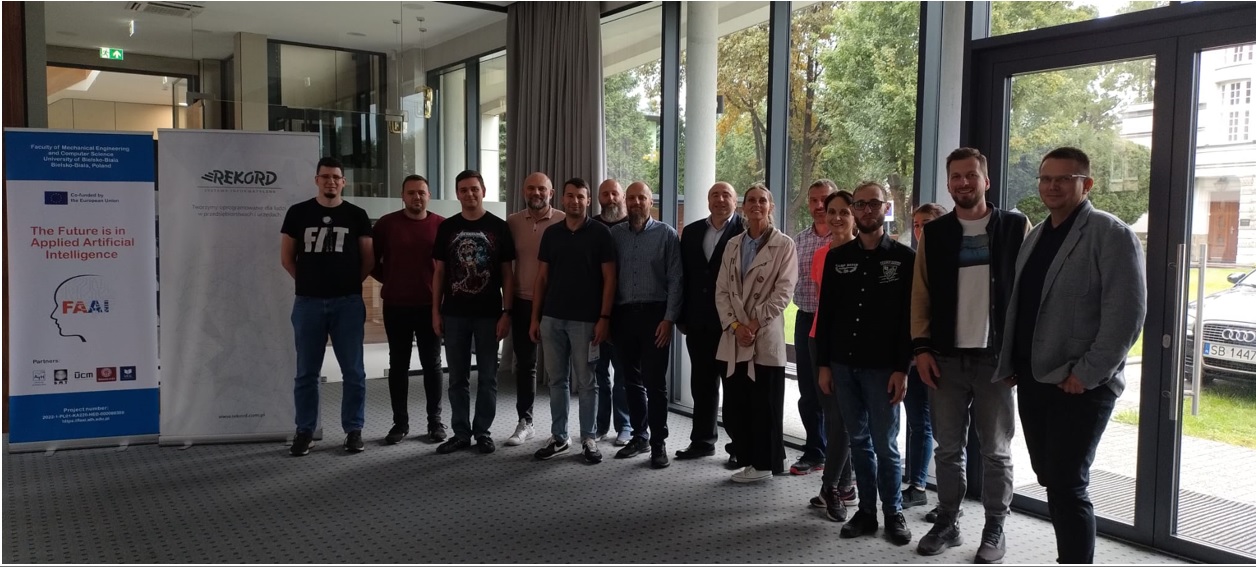
The event took place at Centrum Badawczo-Rozwojowe Rekord SI, Kasprowicza 5, 43-300 Bielsko-Biala, Poland.
The event commenced with the warm welcome from the esteemed Head of Department of Computer Science, Vasyl Martsenyuk, representing the University of Bielsko-Biala. His opening remarks set the tone for an insightful exploration of Applied Artificial Intelligence (AAI) in the contemporary landscape.
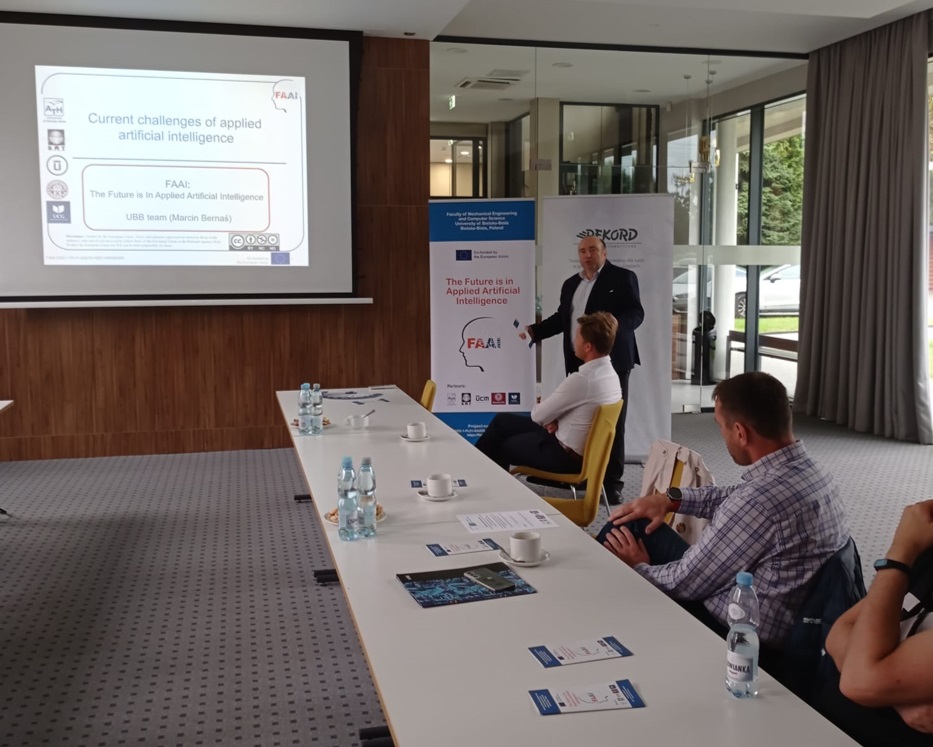
Marcin Bernaś delved into the prevailing challenges faced in the field of Applied AI. His presentation shed light on the intricacies of navigating the ever-evolving landscape of artificial intelligence and emphasized the need for innovative solutions.

Aleksandra Klos-Witkowska took the stage to introduce the FAAI project. She provided a comprehensive overview of its objectives, partners, and identified target groups. The audience gained valuable insights into the project’s scope and its potential impact on various stakeholders.
This paper describes the study of conditions and parameter settings of the algorithm, that underlies in the basis of information technology of person recognition and identification, for creating a unified space for both low-quality and high-quality images with the purpose of developing the requirements to the input images, that will allow correctly identify images with different characteristics. For experimental research the algorithm was used that underlies in information technology of person identification in video stream. It includes the anisotropic diffusion as an image preprocessing method, Gabor wavelet transform as an image processing method, histogram of oriented gradients (HOG) and local binary patterns in 1-dimensional space (1DLBP) as the methods of feature vector extraction from the images. In this work anisotropic diffusion was applied with the parameter that preserves sharper boundaries than previous formulations and improves the automatic stopping of the diffusion. In the study three person images databases were used: The Database of Faces, Facial Recognition Technology (FERET) database and Surveillance Cameras Face Database (SCface). The algorithm performance provided various identification accuracy rate results with the difference, which amount to 20% in average. It arose the issue of input images space mismatching that significantly affected the algorithm performance. Therefore, it has been decided to perform the experimental research to search the possibility to create unified space of the requirements to the input images that will allow correctly identify images from different databases. So, there were performed the experiments with the image compression variety, difference of image resolutions and areas of face regions covering the images.
The paper can be found at: https://ieeexplore.ieee.org/document/10188824
The audio version is available:
Regular online meeting (December 6, 2022, 14:00-15:30 CET) has gathered the representatives of the partners to the Steering Team and Quality Assurance Team. The meeting was a natural continuation of the online meeting in October and Kick-Off meeting on November, 7-8. Agenda included the crucial topics of the project management (WP1) and the implementation of WP2.
The meeting was started from the discussion of the partnership agreement. For the purpose of the successful implementation of the project it was offered by the Steering Team to include the detailed tasks to the bilateral agreements.
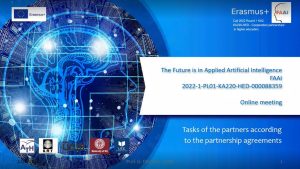
A special attention was paid to the requirements for the forming corresponding primary and secondary target groups.
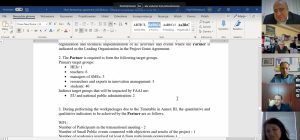
The AdminProject was presented as new platform for the purpose of the project management. There was demonstrated the basic facilities of the system, which enable us the essential improvement of the project management and implementation.

The new platform faai.ath.edu.pl was presented, that incorporating both project website and the facilities of Smart AI Job Hub.
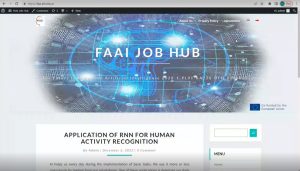
AI helps us every day during the implementation of basic tasks. We use it more or less consciously by tagging from our smartphone.
One of these applications is detecting our daily activities. We are pleased to announce that the article “The RNN classifier team to detect activity using a smartphone and auxiliary nodes” has been published in Sensors and is available online: